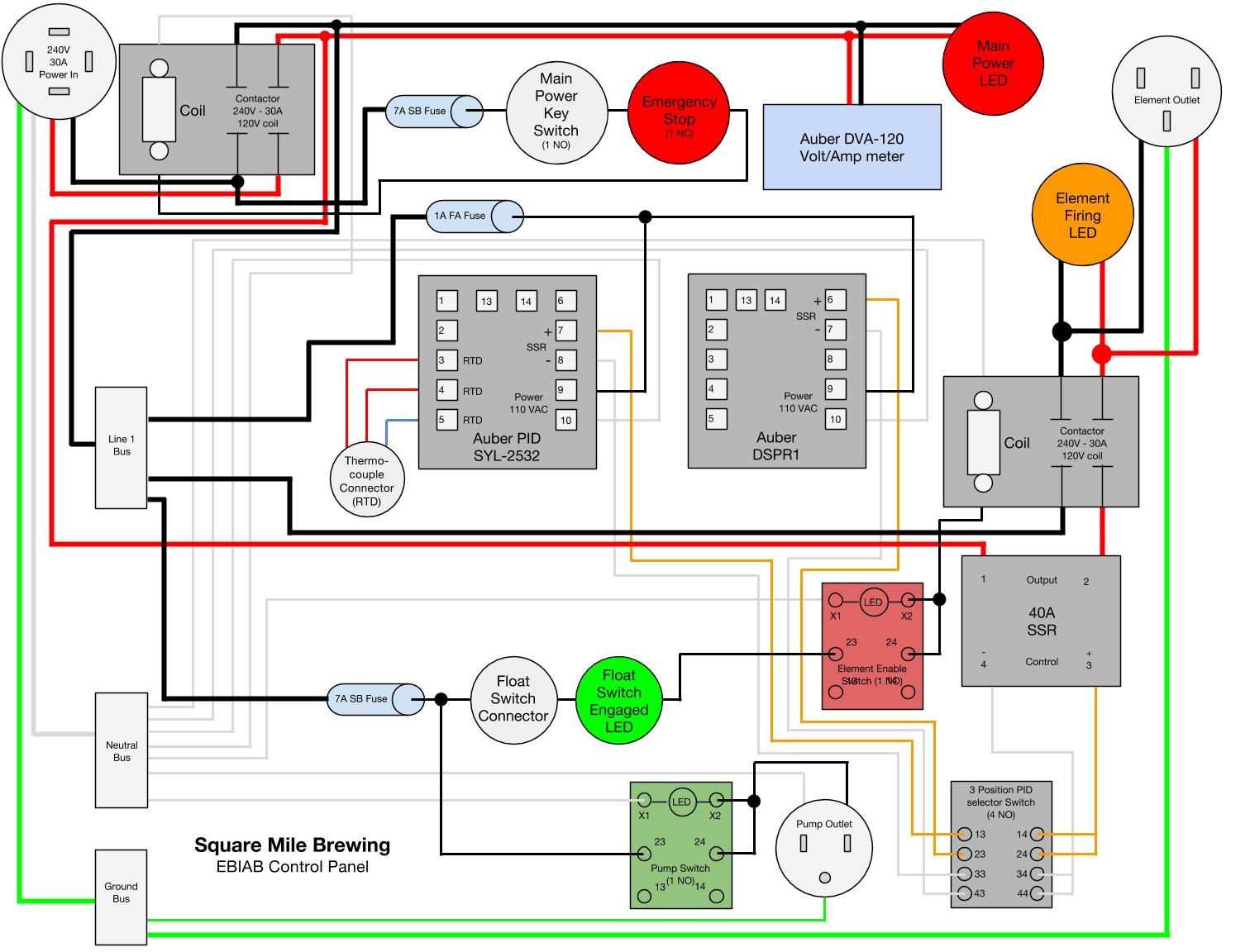- Joined
- Dec 31, 2012
- Messages
- 395
- Reaction score
- 33
I want to have float switches on my kettles to prevent dry-firing the elements.
Would it make more sense to put the float switch between the PID and the SSR or in front of the coil for the contactor that the SSR is feeding?
If it is between the PID and the SSR the float prevents the SSR from energizing and providing power to the coil.
If the float switch is on the coil then the contactor is prevented from providing power regardless of what is happening down stream.
Does it matter or is there a preference that has some basis?
Also with the adapter from auberins do you remove insulation to spread the terminals apart to make your connections or do you splice the cables to something else? I am realizing the having the cable be over 2 feet long doesn't really provide a whole lot of value in my circumstance.
Thanks for your thoughts and input.
-decoleur
Would it make more sense to put the float switch between the PID and the SSR or in front of the coil for the contactor that the SSR is feeding?
If it is between the PID and the SSR the float prevents the SSR from energizing and providing power to the coil.
If the float switch is on the coil then the contactor is prevented from providing power regardless of what is happening down stream.
Does it matter or is there a preference that has some basis?
Also with the adapter from auberins do you remove insulation to spread the terminals apart to make your connections or do you splice the cables to something else? I am realizing the having the cable be over 2 feet long doesn't really provide a whole lot of value in my circumstance.
Thanks for your thoughts and input.
-decoleur























































![Craft A Brew - Safale S-04 Dry Yeast - Fermentis - English Ale Dry Yeast - For English and American Ales and Hard Apple Ciders - Ingredients for Home Brewing - Beer Making Supplies - [1 Pack]](https://m.media-amazon.com/images/I/41fVGNh6JfL._SL500_.jpg)




